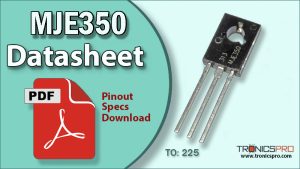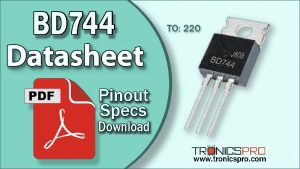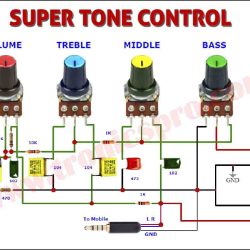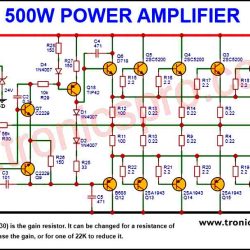If you are working with medium-power circuits and need a durable PNP transistor for switching or amplification, this guide provides everything about the 2N5194 pinout, specifications, equivalents, and applications. The 2N5194 PNP transistor is widely used in power control circuits, motor drivers, and audio output stages due to its strong current handling and reliable thermal stability.

Introduction to 2N5194 PNP Transistor
The 2N5194 is a robust PNP bipolar junction transistor designed for medium-power applications requiring reliable current flow and efficient heat dissipation. With a collector-emitter voltage of -60V and a matching collector-base voltage of -60V, the device performs safely in circuits with moderate-to-high voltage levels.
Capable of delivering up to 4A of collector current and dissipating 40W of power, the 2N5194 is ideal for industrial switching, motor control boards, and amplifier output stages. Its TO-126 package provides excellent thermal conductivity while maintaining a compact footprint suitable for dense circuit layouts.
2N5194 PNP Transistor
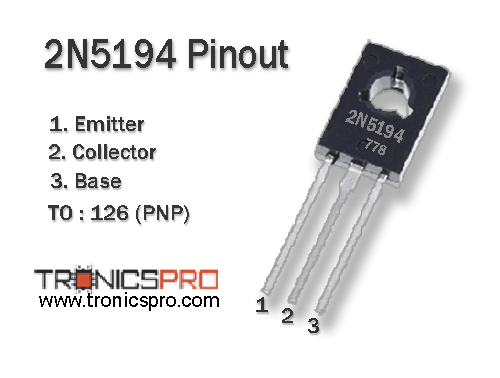
Pinout of 2N5194
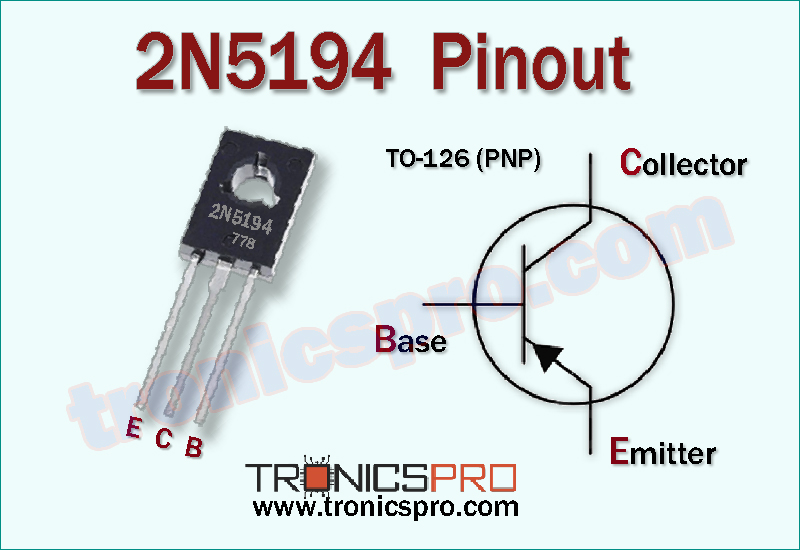
Pin Configuration of 2N5194 Pinout
| Pin# | Pin Name |
|---|---|
| 1 | Emitter |
| 2 | Collector |
| 3 | Base |
Understanding the 2N5194 Pinout Configuration
The 2N5194 pinout follows the E-C-B (Emitter–Collector–Base) sequence when viewing the device from the front of the TO-126 package. Correct pin wiring ensures safe functionality and prevents accidental transistor damage.
Key Features of 2N5194 Transistor
- Medium-power PNP construction
- Capable of driving motors, relays, and high-current loads
- Stable gain characteristics suitable for linear circuits
- Strong overload tolerance during switching operations
- Efficient thermal dissipation in TO-126 package
- Suitable for power control and amplifier applications
2N5194 Transistor Datasheet and Specifications
- Collector-Emitter Voltage (Vce): -60 V
- Collector-Base Voltage (Vcb): -60 V
- Emitter-Base Voltage (Veb): -5 V
- Collector Current (Ic): -4 A
- Power Dissipation (Ptot): 40 W
- DC Current Gain (hFE): Moderate gain range
- Package Type: TO-126
- Pin Sequence: E-C-B
- Transistor Type: PNP
Working Principle of 2N5194 Transistor
As a PNP transistor, the 2N5194 conducts when current flows out of its base terminal. A small change in base current enables a much larger current to pass from emitter to collector. Its high power rating and stable gain make it suitable for:
- Audio output stages
- Power switching circuits
- Relay and solenoid drivers
- Motor speed controllers
- Analog control systems
Because of its stable thermal behavior, it performs reliably in continuous-duty and industrial environments.
More Circuit Layouts



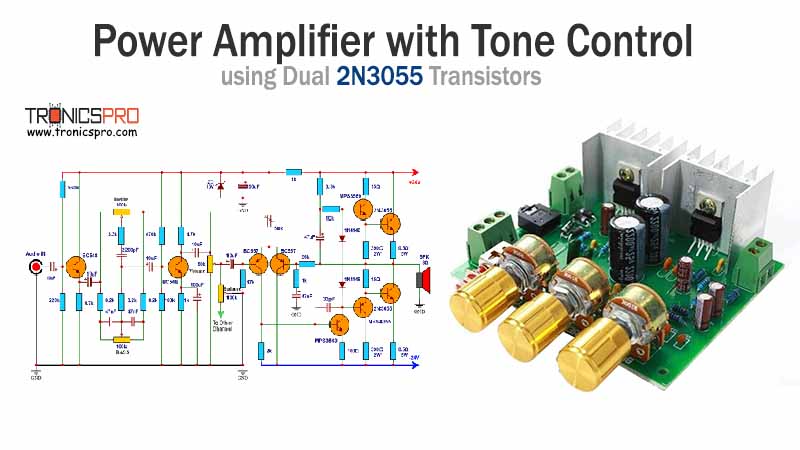
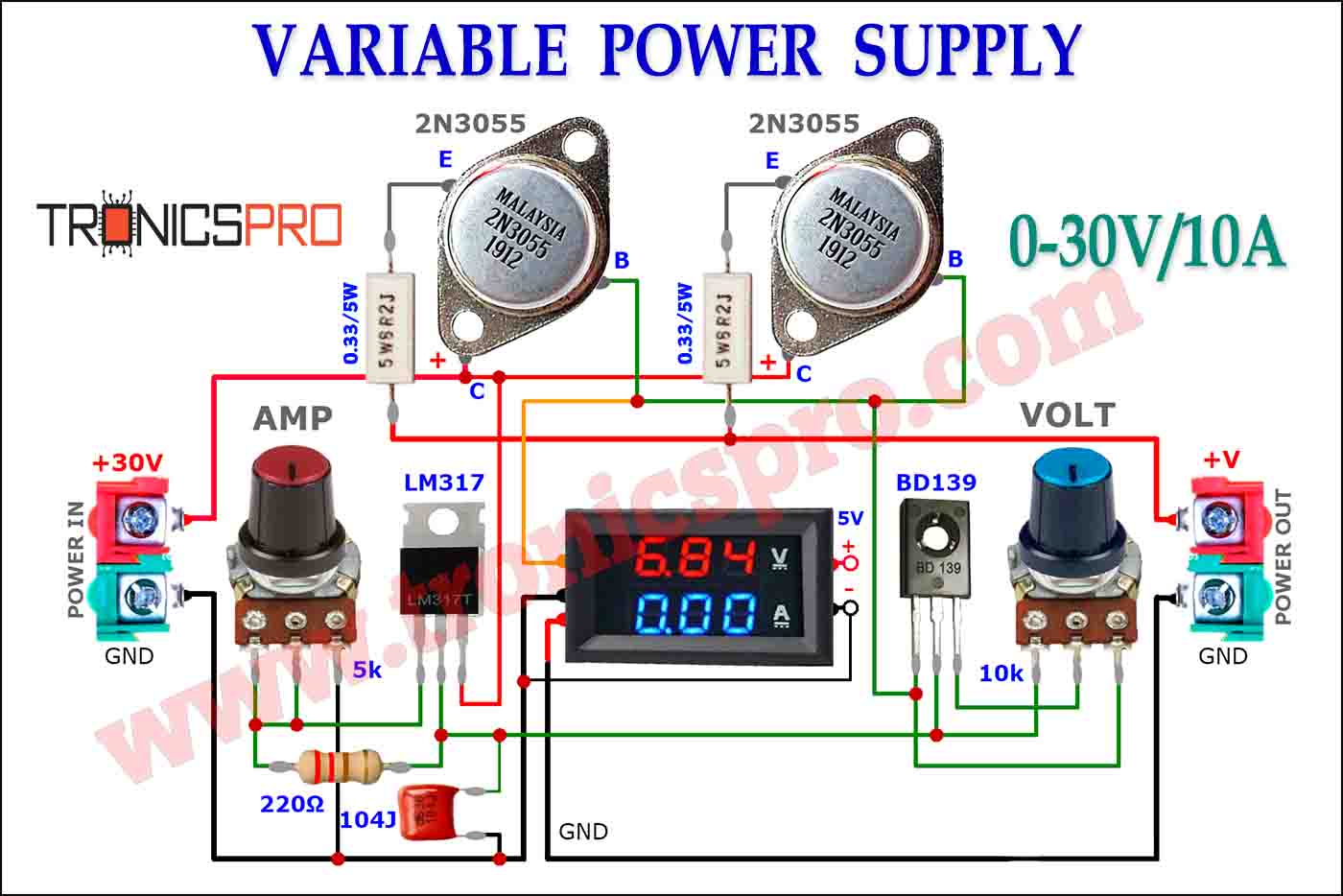


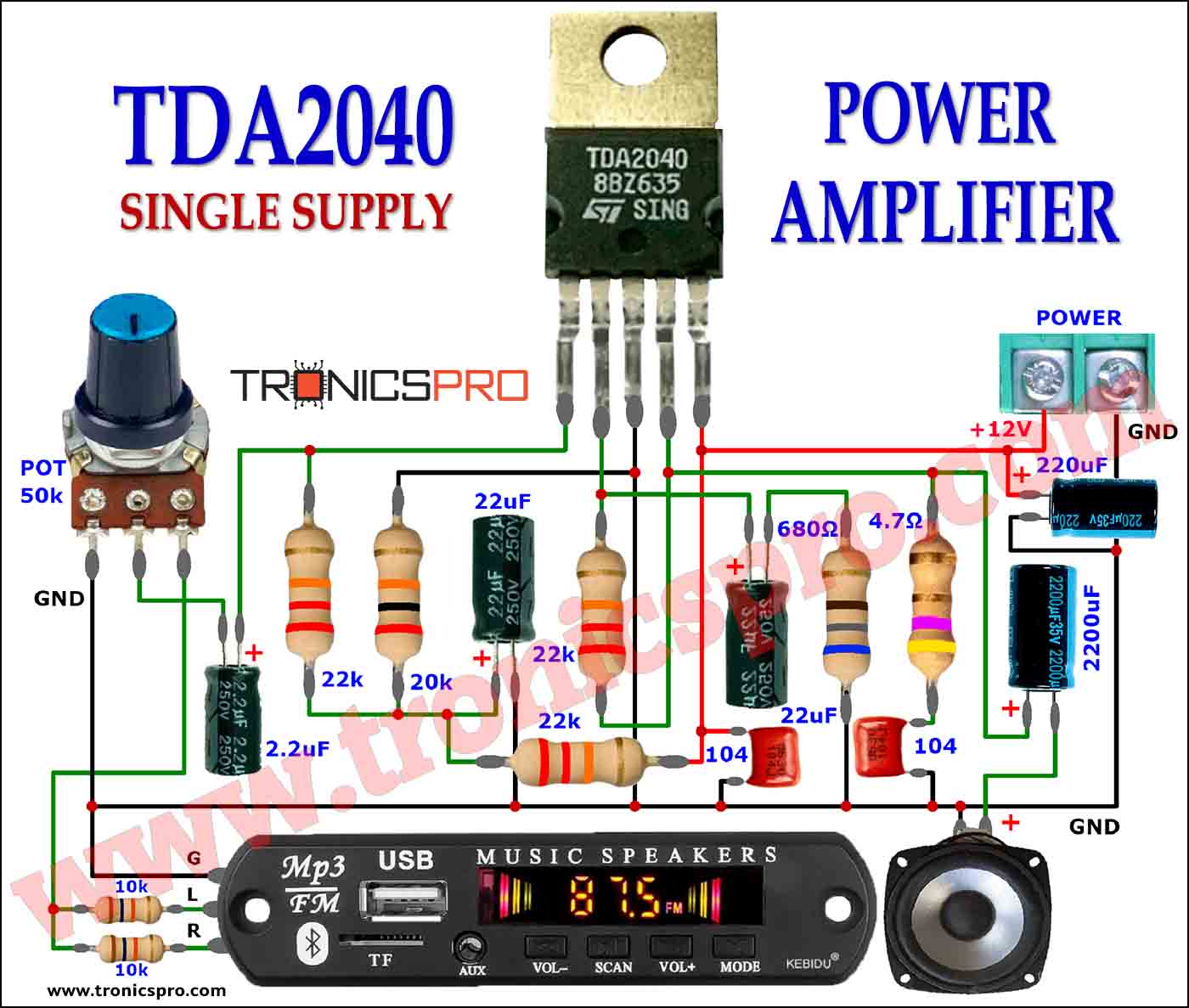
Applications of 2N5194 Transistor
- Medium-power audio amplifiers
- DC motor and relay drivers
- Power switching circuits
- Industrial automation control circuitry
- Voltage regulators and power conditioning circuits
- Push-pull amplifier stages (with NPN complement)
Equivalent and Alternative Transistors
The following transistors are commonly used as substitutes for the 2N5194 (ensure pin compatibility):
NPN Complementary Transistor
The complementary NPN pair for the 2N5194 PNP transistor is:
- 2N5191 (NPN) shares similar voltage, current, and power characteristics.
This makes the pair suitable for designing output stages in power amplifiers, motor drivers, and symmetrical switching circuits.
Comparison Summary – 2N5194 vs 2N5191
The 2N5194 (PNP) and 2N5191 (NPN) form a matched complementary set with identical voltage and current ratings. The key difference lies in polarity:
- 2N5194 PNP sinks current and is used on the negative side of circuits.
- 2N5191 NPN sources current and is used on the positive side.
Together, they are ideal for push-pull audio amplifier designs, H-bridge motor control, and balanced switching stages, providing smooth transitions and minimal crossover distortion.
Frequently Asked Questions (FAQ)
What is the 2N5194 transistor used for?
It is used in power switching applications, amplifier stages, and motor/relay drivers.
What is the 2N5194 pinout?
The pinout is Emitter–Collector–Base (E-C-B).
Is the 2N5194 NPN or PNP?
It is a PNP transistor.
What is the maximum collector current?
The transistor supports up to 4A of continuous collector current.
What is its complementary transistor?
Its complementary pair is the 2N5191 NPN transistor.
Conclusion
The 2N5194 PNP transistor is a powerful, reliable, and versatile device suited for medium-to-high current switching and amplification. With -60V voltage capability, 4A collector current, and 40W power dissipation, it performs exceptionally well in industrial, audio, and motor control circuits. Understanding the 2N5194 pinout, datasheet details, and equivalent options ensures optimal performance and safe circuit integration.
Datasheet & Pinout of 2N5194 PNP Transistor
Click the following Button to download the datasheet of 2N5194 Transistor :
More projects, You may like:
- Video Transmitter DIY Homemade FM Radio Transmitter
- Adjustable Power Supply DIY Battery Charger
- 12V-220V 500 Watt inverter DIY Homemade
- MPPT Solar Charge Controller DIY Homemade
- DIY LA4440 bass amplifier homemade
For more project and circuit diagrams, you can go through the Schematics in the main menu where you can find many interesting projects and circuit diagrams like audio amplifier circuits, voltage booster circuit, battery charger circuit and timer circuits etc., which are all beginner circuit projects. Feel free to check them out!

Thank you for visiting the article.


